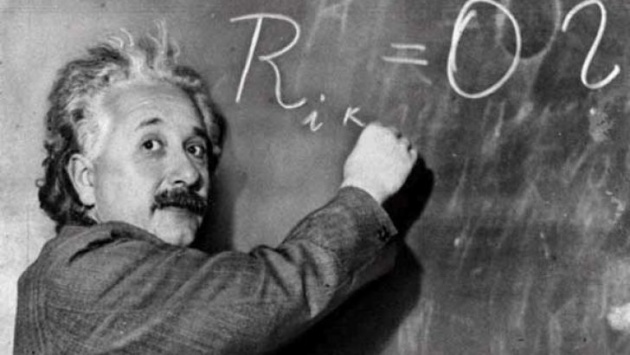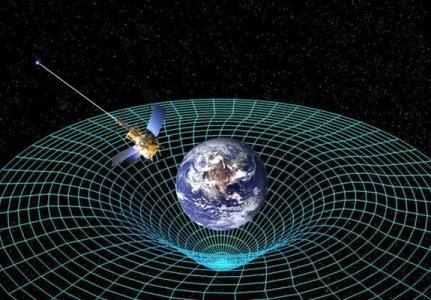Theory of Relativity is one of the most famous scientific theories of the last century, but how well can it explain phenomena related to everyday life? Formulated by Einstein in 1905, Theory of Relativity maintains that the laws of physics are the same everywhere, explains the behavior of objects in space and time and can be used to predict almost everything from the existence of black holes to flow deflection of light in gravitational field and to how behave in orbit, for example, Mercury, writes Agerpres.

Formulated by Einstein in 1905, Theory of Relativity maintains that the laws of physics are the same everywhere, explains the behavior of objects in space and time and can be used to predict almost everything from the existence of black holes to flow deflection of light in gravitational field and to how behave in orbit, for example, the planet Mercury.
This theory may seem deceptively simple at first glance, writes Live Science. First, there is a reference system "absolutely". Every time we measure, for example, the speed of an object or the effect of time on it, do it in relation to another object within a reference system. Secondly, the speed of light is the same, regardless of who a measure of how fast or moving person measuring the speed. And thirdly, nothing can travel faster than light.
The implications of relativity theory in everyday life are profound. If the speed of light is always constant, which means that an astronaut away from the Earth at high speed will measure the passage of time slower than an observer on Earth that it aims to look - basically slows down time for astronaut, a phenomenon known as time dilation .
Any object that is in a strong gravitational field moves faster and therefore will incur turn time dilation. At the same time, the spacecraft astronaut is talking about will suffer a contraction effect of length (Lorentz contraction), which means that if I take a picture should appear flight "flattened" in the direction of travel. For astronaut on board, however, it would seem normal. In addition, the shuttle table would seem to grow from the point of view of those on Earth.
But there is no need for a starship to travel close to the speed of light to observe the effects of relativity. There are a number of examples of relativity that we can experience the daily life and even technologies we use today and demonstrate the validity of Einstein's theory. Here are some ways to observe relativity in action:
1. Global Positioning System (GPS)
Because the GPS system which has, for example, a car, operate with precision so great GPS satellites must be programmed to take into account the effects of relativity. Even if satellites move in orbit at a speed much lower than that of the light, however, their speed is high enough to produce noticeable effects. While moving in orbit, satellites transmit signals to ground stations, like GPS device fitted to the car. Because the position to be played with precision, satellites are equipped with clocks that accuracy in the nanosecond. As each such satellite is in orbit at 20,300 miles from Earth and moving at the speed of about 10,000 km / h, relativistic time dilation occurs about 4 microseconds every day. If we add gravity reach about 7 microseconds, ie 7,000 nanoseconds.
It may seem little, but these differences relativistic can accumulate and can lead to a situation where GPS device tells you after just one day of accumulation of these differences are that by the gas station 0.8 km when in fact there are eight kilometers.
2. electromagnets
Magnetism is an effect of relativity, and if we think about electricity, all relativity is responsible for the operation of electric generators. If we take a spiral or loop of wire from a conductive material and moving through a magnetic field, generate an electric current. Electrically charged particles of the wire are affected by variable magnetic field moves some of these particles, generating an electric current.
What would have to imagine, however, that stands still and magnet wire is moving. In this case wire electrically charged particles (electrons and protons) does not move, so should not be affected by the magnetic field. And yet affected and electric flux is formed. This demonstrates that there is no privileged reference system against which we can make observations, everything is relative.
Thomas Moore, professor of physics at Pomona College in Claremont, California, uses the principle of relativity to prove the law of Faraday (Faraday's law of induction), which states that a changing magnetic flux produces an electric current. "As this is the principle of operation of transformers and power generators, anyone experiencing the effects of relativity uses electricity," says Moore.

Electromagnets and they all work through the effects of relativity. When a direct current (DC) passes through a conductor, electrons are drifting through the material. Typically piece of wire conductors would appear electrically neutral, without having a positive or negative charge. This is a consequence of the fact that it has an approximately equal numbers of protons (positive charge) and electrons (negative charge). But if you put it near another conductor through which a current, the two conductors will attract or repel, depending on the direction of moving electricity.
Assuming both electrical current moving in the same direction, electrons from the first conductor perceives the second conductive electrons as standing still (provided that both electric fluxes have about the same power). Meanwhile, in terms of electrons, protons of both conductors would seem to be moving. Because of relativistic length contraction, the distances between them would seem smaller, so it would be more positive charge per unit length of the conductor relative to the negative charge. How tasks of the same type are rejected, and the two conductors would reject.
If power flows have opposite directions, the result is an effect of attraction because, in terms of the first conductor, other conductive electrons are "crowded" each other, generating a net negative charge. Meanwhile, protons from the first conductor generates a net positive charge and opposite charges attract.
3. The color gold
Most metals are shiny because the electrons of the atoms that compose these metals jump to different energy levels. The photons that strike the surface of these metals are absorbed and re-emitted at a wavelength greater. The vast majority of visible light is reflected, however.
Gold is a heavy atom, and the internal orbit electrons move quickly enough to produce a significant effect relativistic mass increase and by contraction of the length. Therefore, electrons revolve around the nucleus in orbits shorter, with a stronger impetus. Electrons carrying energy orbits close to the interior of the outer electron orbits and wavelengths are absorbed and reflected are higher.
Higher wavelengths of light absorption assume a portion of the visible light that would otherwise be reflected, and this light is in the blue part of the spectrum. White light is composed of rainbow (ROGVAIV), but in the case of gold, when the light is absorbed and then re-emitted wavelengths are typically higher. The mixture of light waves that we see when we look in the gold has less blue and violet spectrum. That is why gold is yellow - light yellow, orange and red wavelengths is higher than the blue.
4. Gold does not corrode easily
The effect of relativistic electrons in atoms of gold is also one of the reasons why this metal does not corrode easily. Gold atom has a single electron in the outer orbit last and still is not as reactive as well as calcium, potassium or lithium atom, for example. Instead, electrons gold atom, being "heavier" than they should remain close to the atomic nucleus. This means that the electron orbiting the distant, all is not as far from the nucleus to react with anything.
5. The mercury is liquid
Like gold, and mercury is a heavy element, with electrons orbiting very close to the nucleus because of their speed and consequently the increase in mass. If, however, the links between the constituent atoms of mercury are worse conditions in which the mercury is melted at low temperatures and is usually in the liquid state of aggregation.
6. TVs and monitors old CRT
Until a few years ago, most TVs and monitors with cathode ray tubes had screens. A cathode ray tube functions by electron bombardment of a surface of the phosphor, by using a strong magnet. Each such active electron pixel light when it hits the back of the screen. The electrons which form the television picture is moving up to about 30% the speed of light. Relativistic effects are important results and television producers had to take them into account when choosing the form of magnets.
7. Light
Newton introduced the concepts of absolute space and time, independent of each other and the observer as an inert background and the events that unfold immutable universe. If Newton had supposed right for scientists to come up with a different explanation of light, because otherwise, according to Newton's theory, light should not be.
"Not that there would be no magnetism, but there was no light because relativity needs of the electromagnetic field variations occur with a finite speed and not instantly," said Prof. Thomas Moore. "If relativity would not have needed this condition (...) changes in electric fields should be communicated instantly (...) and not via electromagnetic waves, and both magnetism and light would not be necessary."
8. Nuclear power stations and supernovae
Relativity is one of the reasons that mass and energy can be converted into each other, which is the principle of operation of nuclear power plants. In addition, if this transformation would not have been done, and no star sun would not shine. Another important effect is found in supernova explosions, which marks the death of stars more massive than the sun.
"Supernovae are for relativistic effects beyond quantum effects in nuclei sufficiently massive stars, stellar core collapse resulting in itself, under the influence of its own weight, resulting in a star very small but extremely compact and with a high table - a neutron star" according to Moore.
In the supernovae are synthesized chemical elements with atomic mass larger than iron - all these heavy elements from such stellar explosions. "We are made of chemical elements in the universe created and then scattered by supernovae. If relativity did not exist, even the most massive stars end their lives as white dwarfs, there would never explode, and we humans have not exist in such a universe, "added scientist at Pomona College.
AGERPRES / (AS - author: Codruþ Balu, editor Mariana Ionescu)



